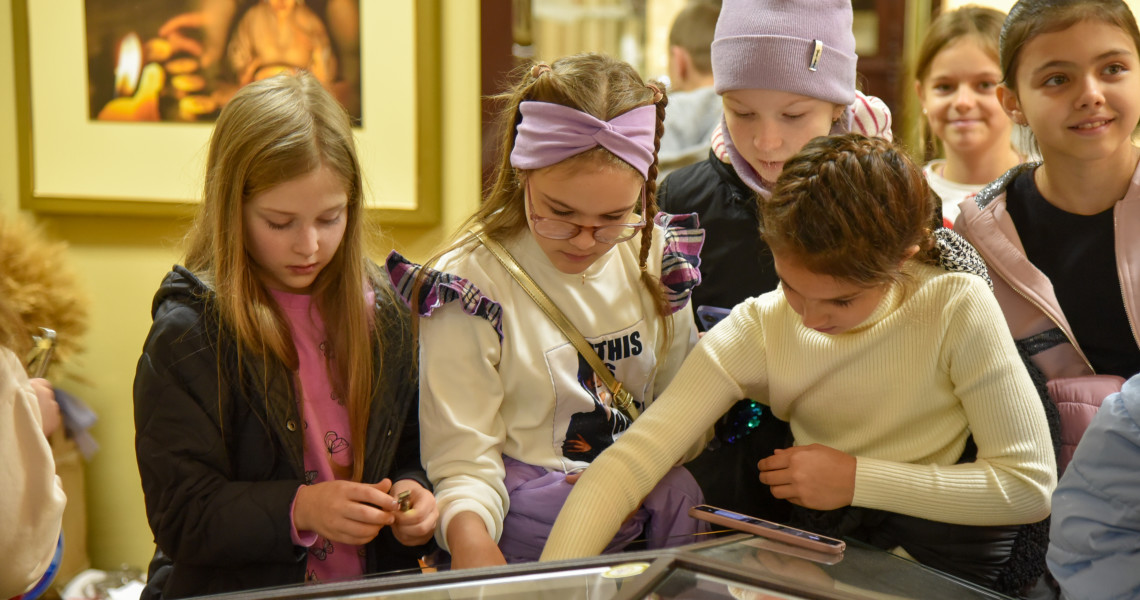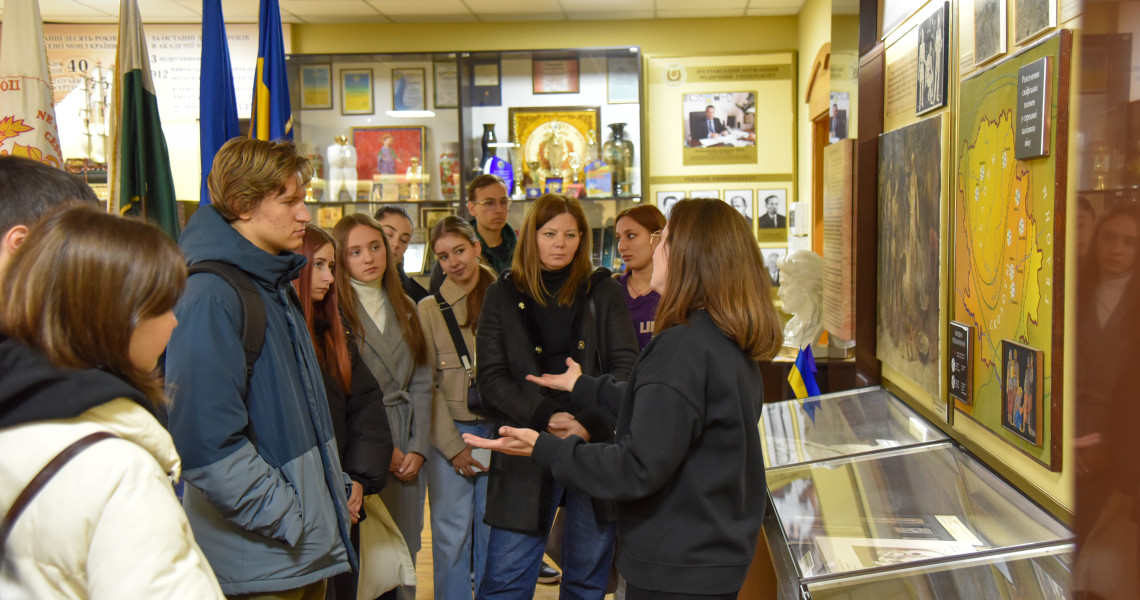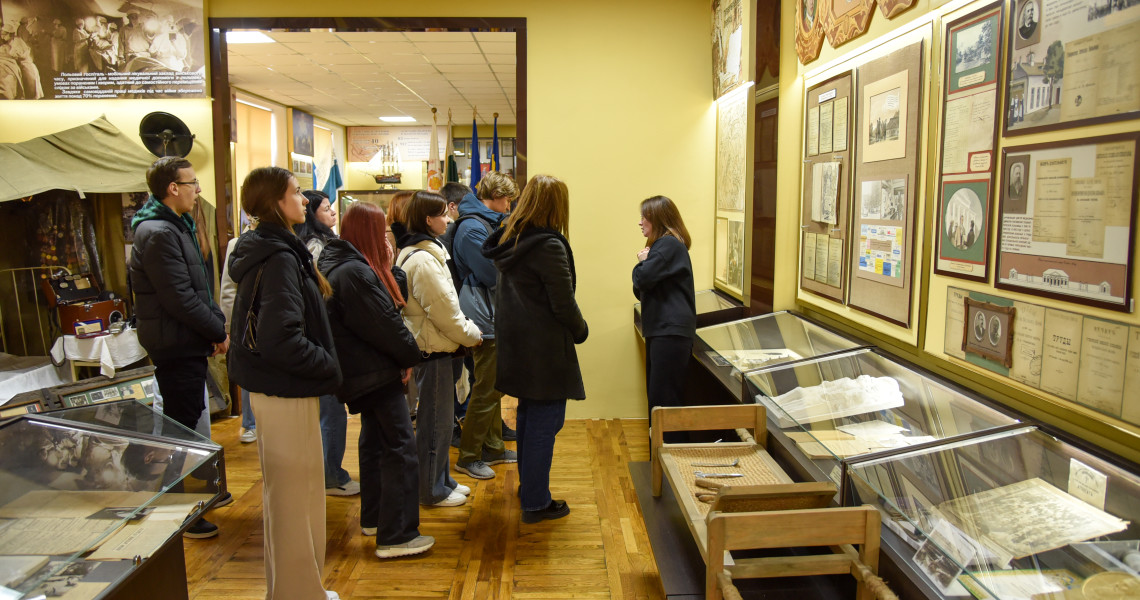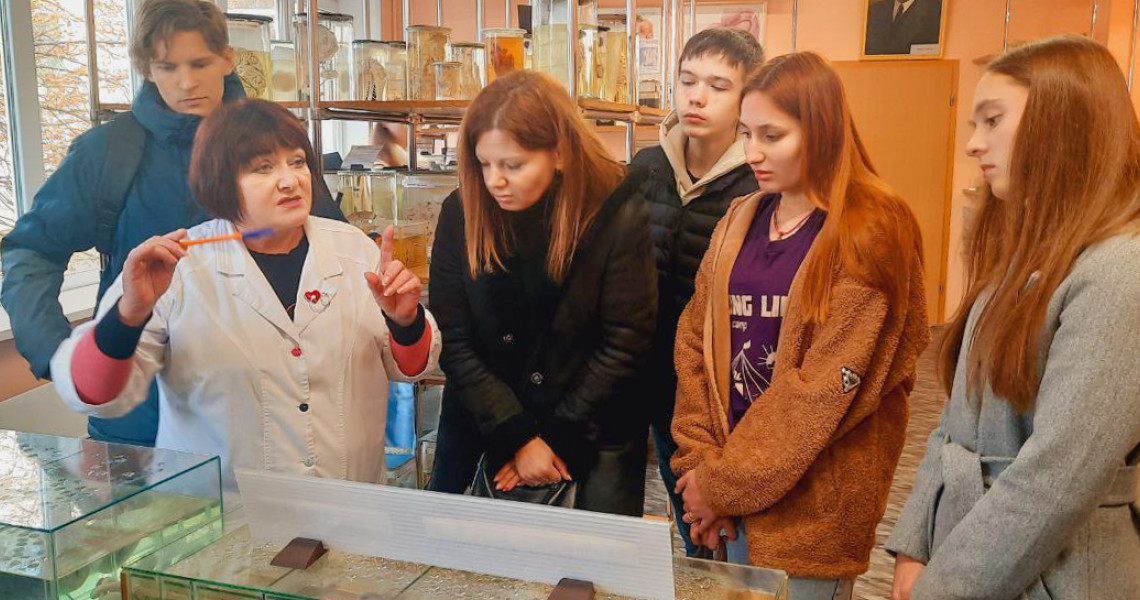Учні 11-ого класу ліцею № 2 «Подільський» Полтавської міської ради побували у народному музеї історії ПДМУ та анатомічному музеї кафедри анатомії людини. Екскурсанти на власні очі побачили, як побудований людський організм, а також прослухали цікаву профілактичну лекцію про основи здорового способу життя від доцентки кафедри анатомії людини ПДМУ Олесі Тихонової.
Відвідувачів також зацікавила експозиція музею історії Університету, яку представила директорка музею Таміла Дашевська. Вона розповіла про розвиток медицини на Полтавщині, важливі історичні етапи та вагомий внесок науково-педагогічного колективу ПДМУ у розвиток медичної науки.
Юні гості з захопленням розглядали експонати, приміряли окремі елементи експозиції та відкривали для себе нові, подекуди несподівані факти з історії медицини. Прощаючись, вони висловили палке бажання повернутися, щоб детальніше роздивитися окремі експозиції.
Можливо, ця екскурсія стане для них першим кроком до вибору професії, пов'язаної з вивченням людського тіла, механізмів виникнення захворювань та реабілітації – необхідної людству в усі часи.
Young guests' impressions of PSMU museums: it can influence their choice of profession
Schoolchildren of the 11th grade of Lyceum No. 2 “Podilskyi” of Poltava City Council visited the PSMU History National Museum and the Anatomical Museum of the Department of Human Anatomy. The attendees saw with their own eyes how the human body is built and listened to an interesting preventive lecture on the basics of a healthy lifestyle from Olesia Tykhonova, Associate Professor of Human Anatomy Department at PSMU.
The visitors were also interested in the exposition of the University History Museum, presented by Tamila Dashevska, the museum director. She talked about the development of medicine in Poltava region, important historical stages and the significant contribution of the academic staff of PSMU to the development of medical science.
The young guests were looking at the exhibits with enthusiasm, trying on some elements of the exposition and discovering new, sometimes unexpected facts from the history of medicine. Saying goodbye, they expressed a burning desire to return to have a closer look at some of the exhibits.
Perhaps this excursion will be their first step towards choosing a profession related to the study of the human body, mechanisms of disease and rehabilitation, which is necessary for humanity at all times.











